
Flavor Notes by Robert Rich: Food, Wine, Restaurants & Recipes
Wines of Argentina
Trade Tasting October 30, 2008
NOTES IN PROGRESS
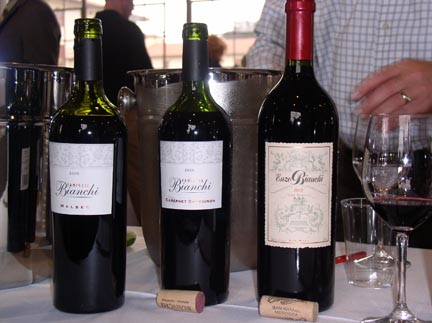
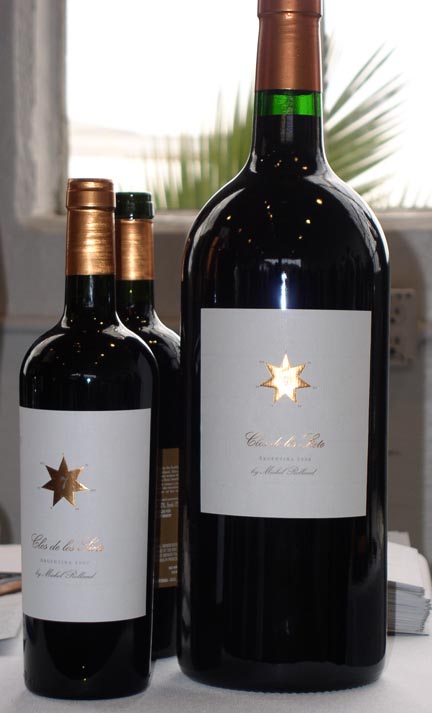
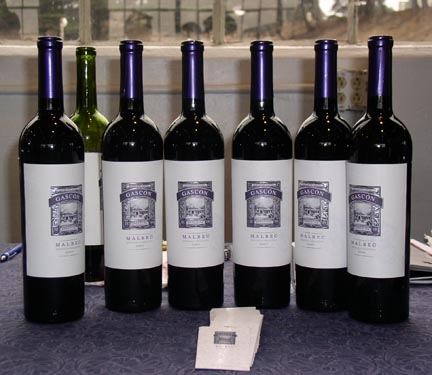
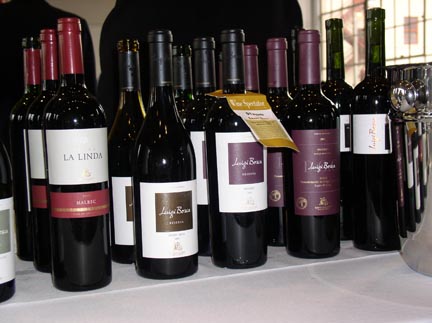
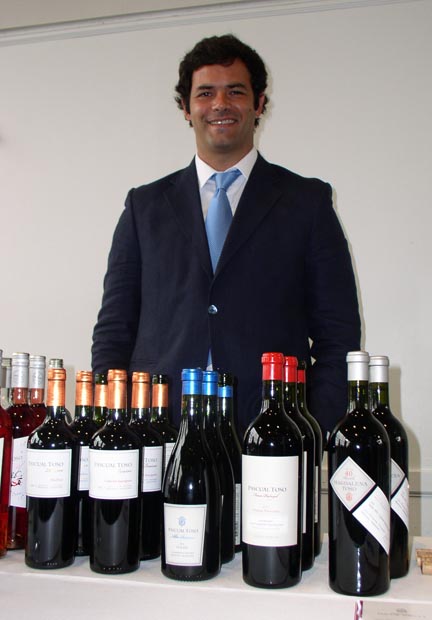
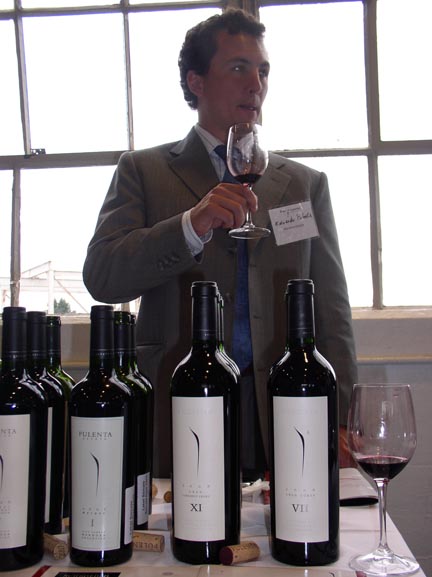
Argentina and Chile
I have become increasingly impressed with some of the wines coming from South America, not only for the ratio of quality to price, but for pure character and quality - regardless of price. While the industrial method has overtaken some wineries in the effort to compete in a world market, the wisdom from over 400 years of winemaking has added a depth and maturity to these wines that should garner the respect from all the world. The fact that some of these wines offer unprecedented values makes these even better regions to explore. The 2002 vintage is tasting especially strong in Argentina, so look for some increase in visibility.
Argentina
1999 Susanna Balbo Brioso Mendosa, (tasted 10/03)
A blend of Cab Sauv and Cab Franc, Malbec and Petite Verdot. Huge explosive Napa-style nose, a bit like Caymus: coffee, cherry cream pie, chocolate, leather, a bit hot from almost 15% alc. In the mouth it shows brighter cherry profile than the nose implies, balanced acidity and velvety soft huge tannic structure, lingering notes of coffee and clove. What a lovely huge wine!
2002 Carmello Patti Malbec ($20) (tasted 4/04)
Very grassy with signs of Brett, chalky oceanic minerality and some Band-Aid iodine character. Not a favorite, but showing a classic profile for traditional Argentinian Malbec
Cicchitti
This winemaker clearly aims his wines to the palate of the American public, hoping to break into this very large market. While his wines show a certain amount of calculated easy appeal, they also deliver great quality and low prices. I expect Chicchetti might become a common sight in the near future.
*2002 Cicchitti Blend Malbec/Cabernet (Mendoza) ($12) (tasted 4/04)
Easy to like, this Malbec blend (70% Malbec, 30% Cabernet Sauvignon) shows a rich toasty profile of berry fruit, mocha, tar, mint, and dark oak perfumes resembling cinnamon toast and fireplace ash. In the mouth the fruit shows maturity and the oak gives spicy overtones that blend well with the tannic structure, showing balance and detail.
2003 Cicchitti Nectar
An unfortified sweet wine, at only 8% alcohol, this shows delicate floral fruity perfumes of apples and honey. Light on the palate, tasting like crisp apple juice, it would complement strong cheeses and paté before a meal, or make a wonderful hot weather wine, chilled on ice to match a fruit salad. I think it would benefit from a bit more acidity and complexity, but it certainly goes down smooth.
Conalbi-Grinberg
I met the two young owners of this excellent winery at the World Wine Merchants tasting in 2004, and I was very impressed with the clean crisp flavor profile that all of their wines displayed. While not the most massive or overtly impressive of the tasting, these wines showed a classicism and seriousnss that I respect.
1999 Conalbi Grinberg "Duetto" Malbec ($32) (tasted 4/04)
Very clean, crisp and fresh expression of bright cherry fruit and sweet caramel oak. This still seems young and simple, but showing balance that should do good things in time. This is the flagship wine of an excellent maker, whose profile begins with clarity and crisp structure. I suspect that in a few years, this wine will mature to a deep expression of fruit and place.
1999 Conalbi Grinberg Merlot (tasted 4/04)
Nose showing sweet oak profile of vanilla and caramel, with a hint of brambly stems (partial whole cluster fermentation), soil and mushrooms, chocolate and coffee. Rounded fruit with structured tannins in the mouth, and a sweet oak finish.
2000 Conalbi Grinberg Vinorum Malbec (tasted 4/04)
Nose showing dark toasted oak with fireplace ash, dark cherry-cassis fruit caramel, and a palate giving clean fruit with a caramel oak finish and tight tannins.
2000 Conalbi Grinberg Cabernet Sauvignon (tasted 4/04)
Fragrances of graphite minerality jump out of the glass, followed by austere cassis fruit. Palate offers bright hard red cherries and tannic minerality, with a graphite finish. This one needs several years to soften into what might become a sophisticated and earthy balance.
Dolium
A relatively new winemaker, who dug one of the first underground wine caves above Mendoza valley, with vineyards at 3500 feet altitude in the foothills of the Andes. I find these to be very good wines overall, with consistent acidity and mineral notes from decomposed granite soil. A few minute flaws seem to run through these wines, including Brett and potentially some non-cork related TCA which puzzles me. These flaws are minor, though. Dolium receives winemaking assistance from American vintner Paul Hobbs, who also imports the Nativo Series "El Felino" described elsewhere in these notes.
2001 Dolium Malbec (tasted 6/04) ($9)
Nose hints at fennel and grapiness. In the mouth it shows bright Sweet-Tarts cherry candy, iodine (Band-Aids) and a strong graphite/cedar finish. Not a favorite, but showing a profile characteristic of the fruit and place.
2001 Dolium Cabernet Sauvignon (tasted 6/04) ($9)
Somewhat simple cherry fruit, with some earthiness and pepper, and a large dose of Bretty barnyard and some bandaid. Not as good as the Malbec.
2002 Dolium Malbec (tasted 9/04) ($9)
With increased complexity over the '01, 2002 looks like a great year for Dolium. Nose projects a top note of granite dust, with bing cherries, cocoa powder and a hint of Band-aid. The palate seems almost salty, with some oceanic qualities, unsweetened chocolate, iron minerality, and a tiny waft of gardenias and caraway (from volatile acidity.) This wine opens up very well in the bottle over a ten hour period, developing a deeper fruit profile while the minor flaws diminish.
2002 Dolium Tempranillo (tasted 9/04) ($9)
Varietal character of black olive fruit with granite dust terroir, a touch of taffy and Band-aid. Starts out bright and austere in the mouth, with acidic black olive and almost woody tannins. This pairs very well with food, and a bite of parmesan cheese does amazing things to soften the austerity, allowing flavors of coffee and black cherry to to linger on the tongue.
2002 El Felino Malbec, Nativo Series, Paul Hobbs Selections ($13)
An excellent value wine, offering inky black cherry fruit, tar, rust, hints of iodine, leather, tobacco, and soft creamy-yeasty smells. Warm and fruity palate, softer than the nose implies, with earthy blueberry flavors, cocoa and ferric overtones.
2000 Familia Cassone Cabernet Reserve ($13) (tasted 4/04)
This one doesn't jump out as a complex or noteworthy wine. With tight acids, hard tannins and cedary red fruit, I expect that grape maturity became a challenge for this winemaker during this year. Having tasted it only in the context of a large tasting, I would be happy to give it another chance.
Tierras del Viento
This small winery has been seeking distribution in North America. It shows a unique profile. With grapes grown in Patagonia, it's among the most southerly wineries in the world. If considered symmetrically to North American lattitudes, this winery would be in Alaska. Surprisingly, my favorite wines had seen no oak, showing only grape characteristics. The reserve had some flaws, but those flaws may have come from the fact that the reserve had been a barrel sample, flown North and open for two days.
2002 Malbec (tasted 4/04)
Dusty clean earthiness, coffee tannins, no oak at all. Fruit shows a thick center palate, not cherry or berry .... like coffee and earthy roundness. Unique and very suitable to food pairing.
2002 Merlot (tasted 4/04)
Cherry-Vanilla caramel nose, but not particularly oaky. Some sweaty musky earth, tar, grapeseed tannins. Round in the mouth, tannic finish.
2002 Malbec/Merlot blend (50/50) (tasted 4/04)
Less satisfying than either wine on its own. Tight, young and a bit odd.
2002 Malbec Reserve barrel sample (tasted 4/04)
Some problems that may be due to travel, open bottle or barrel age, hard to tell. Oxidation and vegetal flaws on the nose, with some VA, but good black cherry and fennel character showing under these qualities. Better profile in the mouth, some tobacco from the oak and more rounded fruit profile than the un-oaked wines from the same vintage. Hard to judge from this sample, but I think I prefer the un-oaked versions.
Villa Seca (Mendoza)
This winery makes a first and second wine from the same Cabernet and Malbec grapes. These are both top-notch red wines with unique character.
2000 Patron Santiago (tasted 5/04)
Wow, what a huge and well structured wine. Layers of complexity from firm ripe fruit, with smells of Lapsang Souchong tes, blackberries, cigar box, rose petals, dusty tarmac and a tiny hint of artichoke earthiness. The saturated dark fruit flavors offer firm cocoa butter tannins, fiesty acidity, chocolate and dust, with a hint of butterscotch in the finish. This wine should age well for a decade or more.
2000 Villa Seca (tasted 5/04, 7/06)
The second wine from this maker, with batches rejected from the Patron Santiago. Slightly wirey acidity, grassy and metallic overtones with acidic red berry fruit and a finish reminiscent of sweet-tarts candy. I think in another year or two some of these features will resolve, and show the complexity of this excellent fruit in a slightly lighter framework. Still, a good value wine at around $15.
(Re-tasted 7/06) this wine is at a perfect age and could even develop more complexity over the next few years. Showing very well!
Chile
Cantaluna
Casablanca Valley
2002 Pinot Noir (tasted 4/04)
Pure Pinot Noir character, magnified. Fragrances of dark cherries, tobacco oak, earthy mushrooms, dry grassland and rubber. Flavors offer deep black cherry fruit with earthy complexity and a tiny hint of eucalyptus, medium to low acidity and low tannin. Pair with a wild mushroom cassoulet. Yum.
2003 Sauvignon Blanc
Fragrances move towards eucalyptus, with smooth lichi fruit and other tropical overtones. Round and ripe on the palate, but with clear lingering acidity.
Casa Julia
Maipo Valley Chile
Still seeking distribution in the United States in early 2004, this winery is making some very impressive big clean fruity wines which should please anyone who likes large structured California reds. Prices have not yet been established in April 2004, but it seems they should be very reasonable (under $20 and worth it.)
2002 Carmeniére Maipo Valley (tasted 4/04)
Nose of oily tar and graphite, a hint of Band Aids (iodine). Graphite minerality on the tongue (like pencil shavings) with a finish of sweet oak. Not my favorite, since the oaky sweetness seems to separate out from the austere minerality of the grape - yet this wine seems to depict a pure image of the grape and region.
2002 Merlot Maipo Valley (tasted 4/04)
Cherry fruit with chocolate and brambles, graphite, tobacco and fireplace oak. In the mouth it expands into dark black cherry, plum, tar and cocoa. This earthy Merlot may be among the most complex and intense of Casa Julia's wines.
2002 Cabernet Sauvignon (tasted 4/04)
With a slightly simpler profile than the Merlot, the Cabernet still shows deep extracted fruit with good structure. Rounded cherry, tar and coffee, a big ball of fruit in the middle of the mouth, with a light clear finish.
2002 Syrah Maipo Valley (tasted 4/04)
An excellent balance between grassy earthy smells, floral perfumes and deep extracted full-bodied fruit. Nose of wet haystacks, cherry liquorice, taffy oak, tarmac, coffee and blood/rust. Rounded mouth-feel with dry grasses, ripe oily cherries, saddle leather and Lapsang Souchong tea (smokey tannins.) The finish moves swiftly away from the oily fruit and towards the lighter tea flavors, not at all cloying, but very long lasting.
2002 Pinot Noir D. Bosler Birdsnest (tasted 5/04)
Vinted by Casa Julia under the D. Bosler label, this Burgundian style pinot noir shows full-bodied ripe fruit with very crisp citrus acidity. Nose of grapefruit and orange juice with some metallic rusty qualities, peppery herbal tones of thyme, savory and lemongrass, some fireplace tasted oak. Shows more oak on the palate than in the nose, but not caramel sweetness, more dry and ashy. The fruit finishes with a touch of astringency. Pairs excellently with thyme-crusted seared ahi. (14% alc.)